Physical Address
304 North Cardinal St.
Dorchester Center, MA 02124
Physical Address
304 North Cardinal St.
Dorchester Center, MA 02124
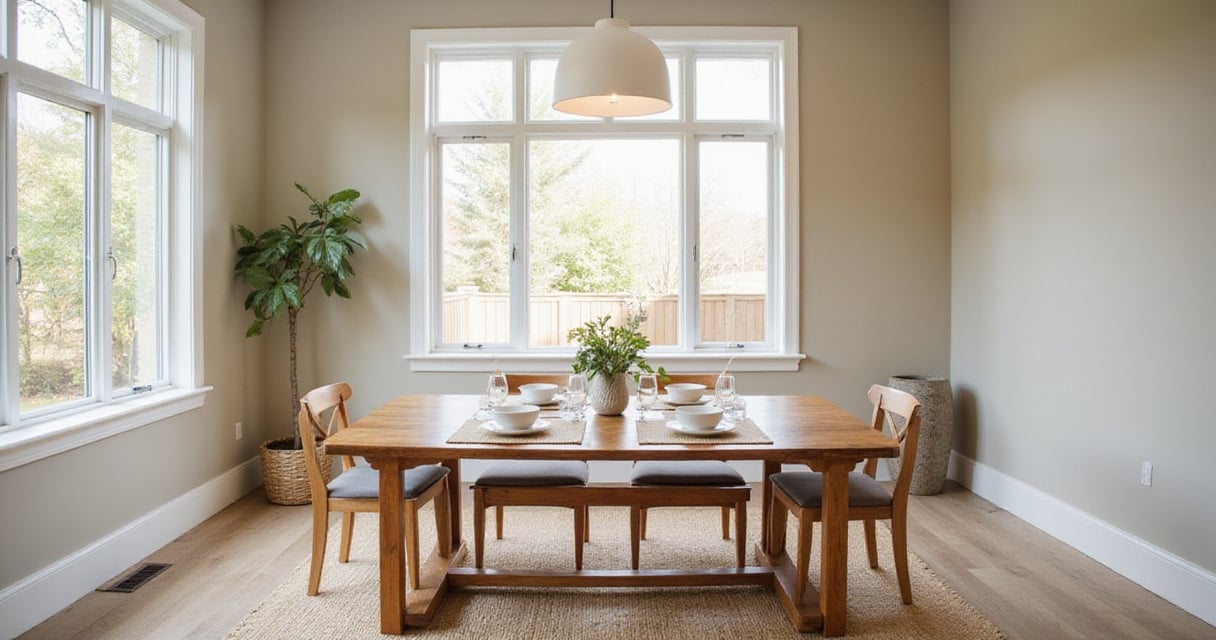
Transform your home with these 18 essential dining room furniture tips. Learn how to select the perfect table, chairs, storage pieces, and accessories that create a beautiful, functional space for gathering and connection.
The dining room stands as more than a place to eat—it’s where life’s meaningful conversations unfold and where families forge their deepest connections. As a space where we break bread together, it deserves furniture that honors both function and beauty, creating an atmosphere that welcomes and nurtures.
Whether you’re creating a dining space from scratch or refreshing your existing setup, the right furniture choices transform ordinary meals into sacred rituals of togetherness. The perfect dining room furniture balances practicality with aesthetic harmony, serving as the backdrop for everything from weeknight dinners to holiday celebrations.
Your dining table is more than furniture—it’s the heart around which everything else revolves. This centerpiece dictates not only how many can gather but also sets the tone for your entire space. The perfect table balances size, shape, and material to create both function and beauty.

When selecting your table, consider both your room dimensions and typical gathering size. Allow at least 36 inches (ideally 42-48 inches) between the table edge and walls or other furniture pieces. This buffer ensures comfortable movement around the table. For each person, allocate approximately 24 inches of table width for comfortable dining without elbow-bumping.
“The dining table is where we connect most intimately with others—choose one that invites lingering conversations rather than rushed meals.”
The inspiration for this collection struck when I visited a traditional Moroccan home where the dining table wasn’t merely functional—it was treated as a sacred object around which family stories were shared across generations. Consider how your table might similarly serve as both practical surface and spiritual center.
Once your table anchors the space, focus shifts to where people will actually sit. Dining chairs contribute significantly to both comfort and style, determining whether guests linger for hours or make quick exits after meals.
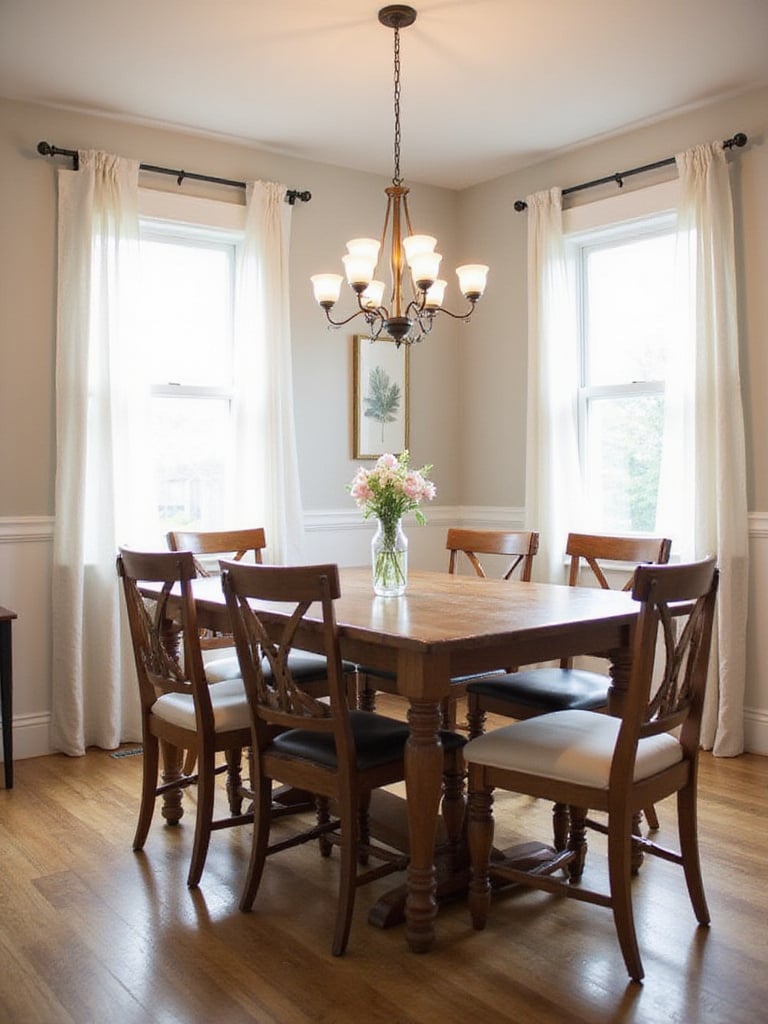
Comfort extends beyond cushioning—consider ergonomics like seat height (ideally 10-12 inches below the tabletop), adequate seat width and depth, and supportive backs. Material choices range from classic wood chairs (timeless but potentially hard) to fully upholstered options (comfortable but vulnerable to stains). For everyday use, look for:
What makes this design special is the way traditional Islamic geometric patterns can inform even modern chair designs. The repetition and harmony found in these patterns remind us that seating arrangements, too, can reflect a higher order and purpose in our dining spaces.
A well-appointed dining room benefits tremendously from dedicated storage that keeps necessities close at hand while maintaining visual serenity. The buffet or sideboard serves this dual purpose beautifully, providing both practical storage and an elegant display surface.
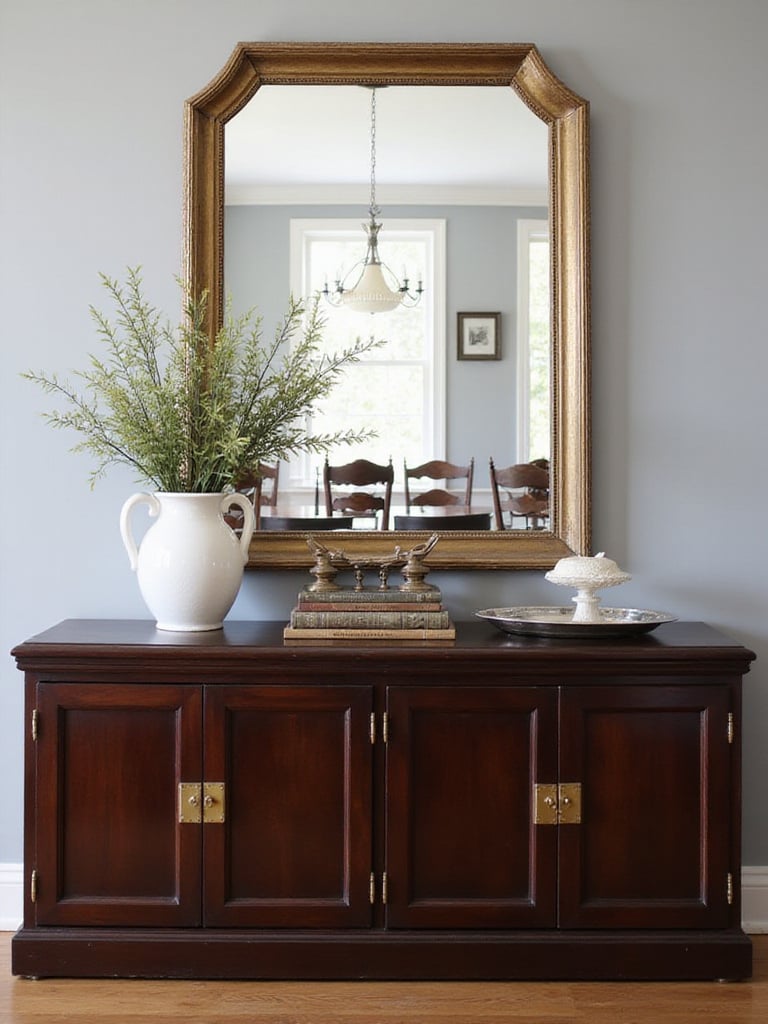
Your sideboard should harmonize with your dining room furniture while offering ample space for storing linens, serving pieces, and special occasion items. Measure available wall space carefully, ensuring at least 36 inches of clearance for comfortable movement. The piece should feel proportional to your table—neither overwhelming nor insignificant in comparison.
The artisans behind these designs began with the understanding that dining requires both beauty and order. A thoughtfully chosen sideboard acknowledges this balance, providing hidden storage for practical items while its surface becomes a canvas for meaningful objects that enhance your dining experience.
While sideboards handle practical storage, china cabinets elevate your dining room by showcasing treasured possessions that might otherwise remain hidden. These display pieces add refinement while protecting and highlighting your most beautiful objects.
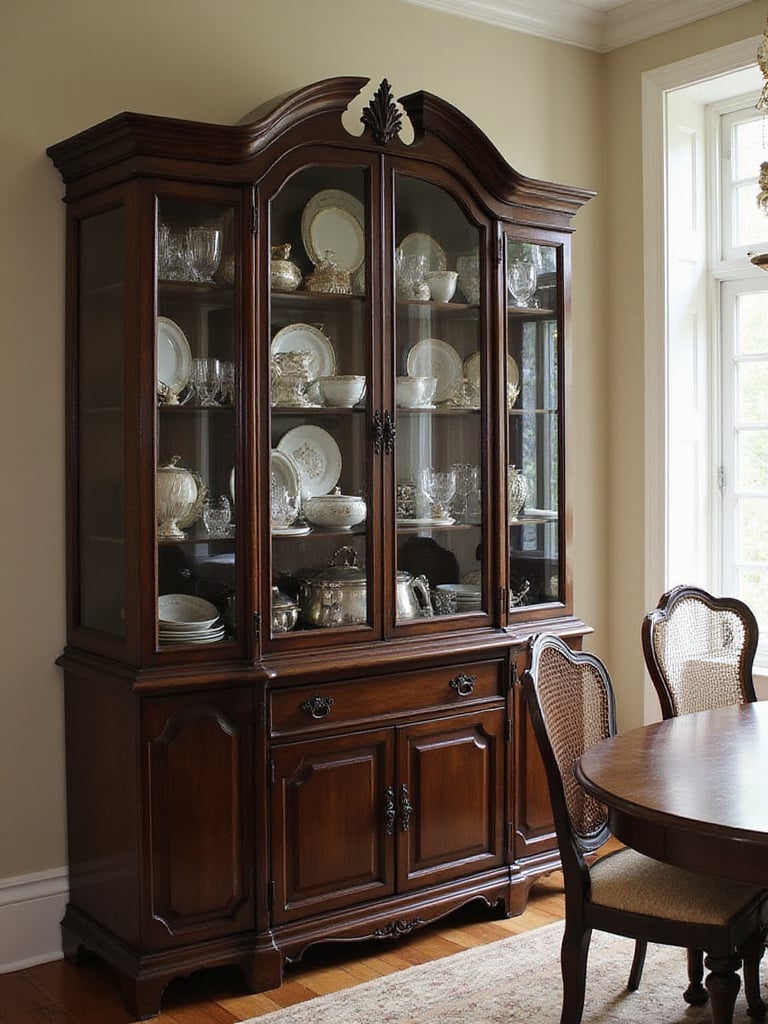
China cabinets come in various styles to complement your existing dining room furniture. Traditional wood cabinets with glass doors create formal elegance, while modern display cases with metal frames suit contemporary spaces. Corner cabinets maximize unused space, and hutches combine display with additional storage below. When arranging items inside:
The cultural heritage preserved in each piece includes the story of how we honor guests through beautiful objects. In Islamic tradition, offering food and drink from special vessels shows respect and care for visitors—a china cabinet allows these meaningful pieces to remain visible even when not in use.
For those who enjoy hosting, a bar cart brings both practicality and a touch of sophistication to the dining area. This mobile station keeps beverages and serving essentials at hand without consuming permanent space.
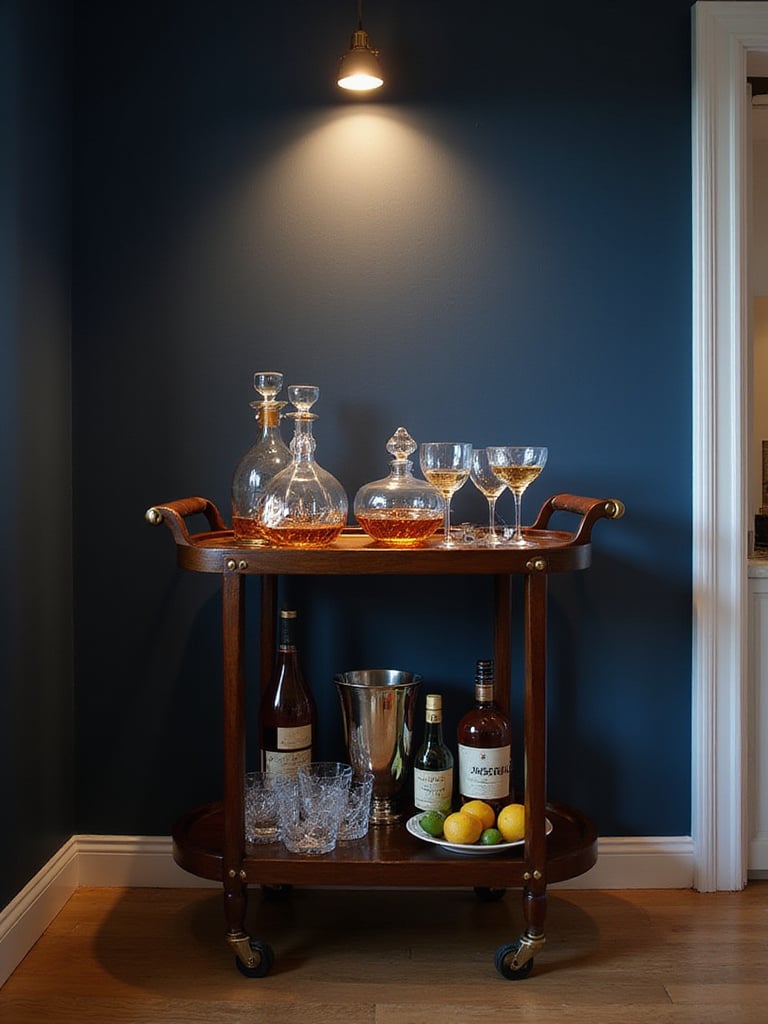
When selecting a bar cart, consider both function and style. Look for sturdy construction with smooth-rolling wheels and enough surface area for your entertaining needs. Style options range from sleek, modern designs to vintage-inspired pieces with ornate details. Stock your cart thoughtfully with:
The unexpected environmental benefit comes from the bar cart’s inherent efficiency. By consolidating entertaining essentials in one mobile station, you eliminate unnecessary trips to the kitchen and create a more intimate gathering experience where the host remains present with guests.
Perhaps the most critical decision in dining room furniture selection is ensuring your table properly fits your space. An oversized table creates cramped, uncomfortable conditions, while one too small feels awkward and disconnected.
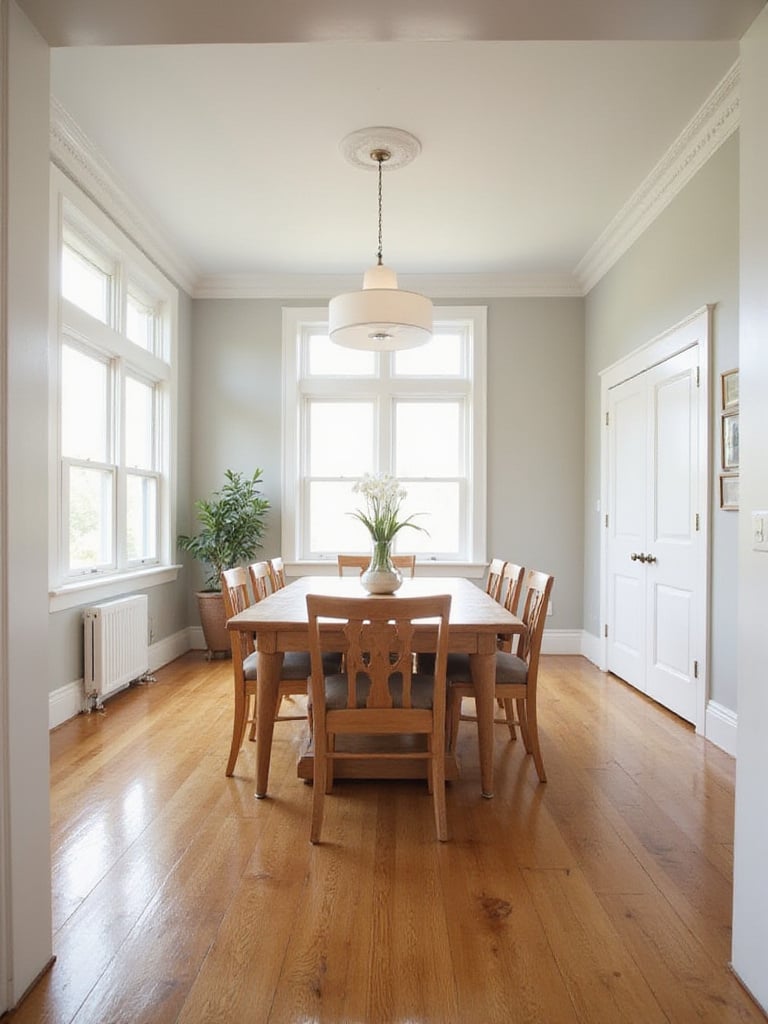
To determine ideal table dimensions, measure your room’s length and width, then subtract 6-8 feet from both measurements to account for necessary clearance. This calculation gives you the maximum dimensions your table should occupy. For visual confirmation, outline your prospective table’s footprint with painter’s tape on the floor, then walk around it to assess traffic flow.
If you’ve struggled with similar rooms before, consider that the dining table’s shape can dramatically affect how spacious a room feels. A round table often works better in smaller spaces because the absence of corners allows easier movement, while rectangular tables define larger spaces more effectively.
Beyond size, your dining table’s shape profoundly influences both functionality and the subtle psychology of gatherings. Each shape creates a different energy and serves different purposes in your home.
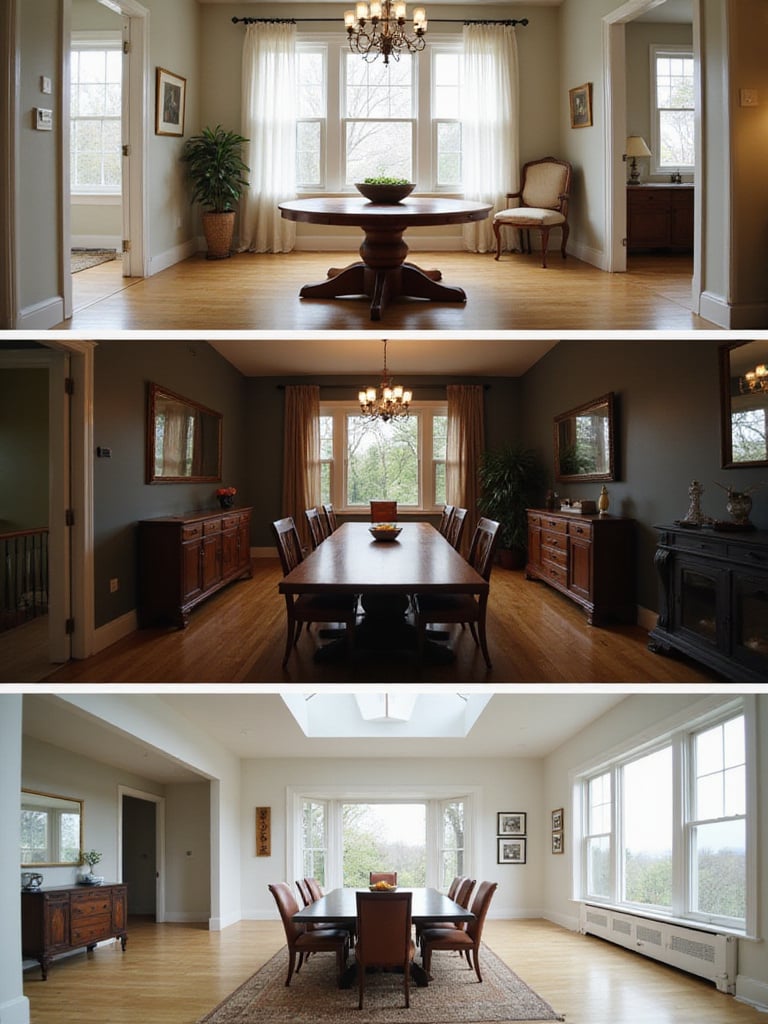
Round tables foster intimacy and conversation since everyone faces each other equally—there is no “head” of a round table. They work beautifully in square rooms and smaller spaces but become less practical for very large gatherings. Rectangular tables, the most common choice, define space efficiently and seat more people, though conversations across the length can be challenging. Square tables offer balanced proportions but can feel awkward in rectangular rooms.
The interplay between the colors creates different energies depending on table shape. In Islamic design tradition, the circle represents unity and the divine, making round tables particularly conducive to harmonious gatherings, while rectangular forms echo the stability of earth-bound structures.
The materials you choose for your dining room furniture determine not just how it looks, but how it performs over years of use and how it feels to those who gather around it.
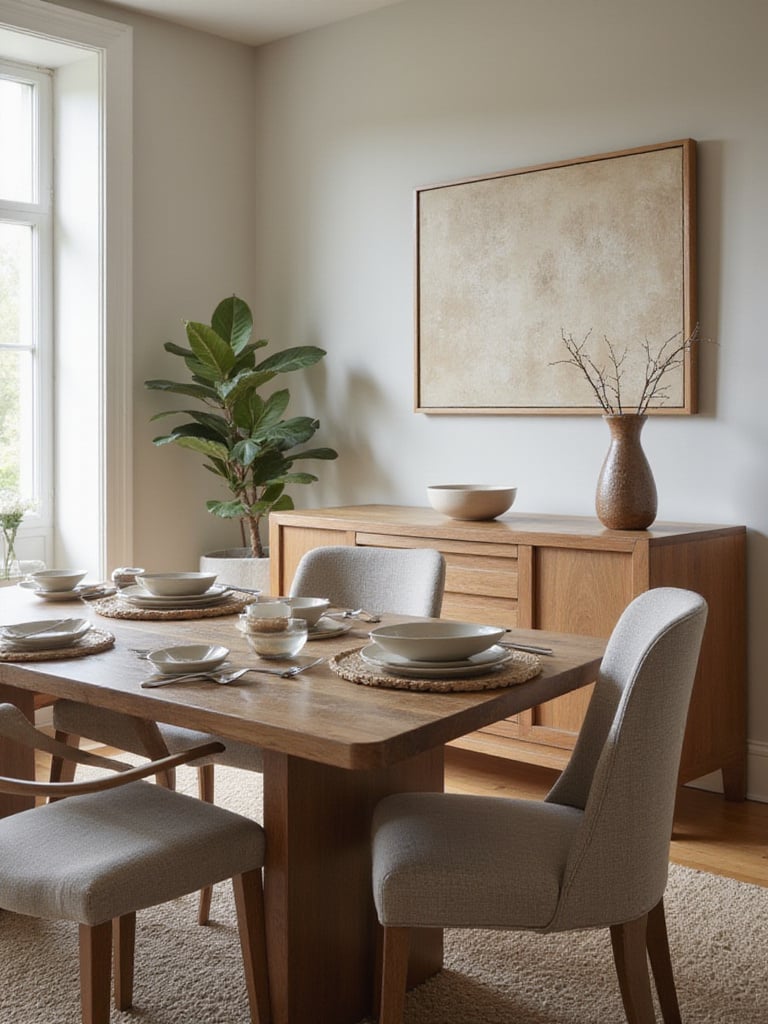
For tables that will see daily use, prioritize durable finishes like polyurethane or conversion varnish that resist water damage and scratches. Consider the practical aspects of different materials:
The sustainable journey of this material involves understanding how it ages. Quality wood dining furniture develops a patina that tells the story of your family’s gatherings, while materials like marble may show etching that records special meals shared. Choose materials that age gracefully rather than those that simply deteriorate.
Creating visual harmony between your dining room furniture and the rest of your home ensures a cohesive, thoughtful environment. Disjointed styles can create visual tension that subtly disrupts the peaceful atmosphere essential for meaningful meals.
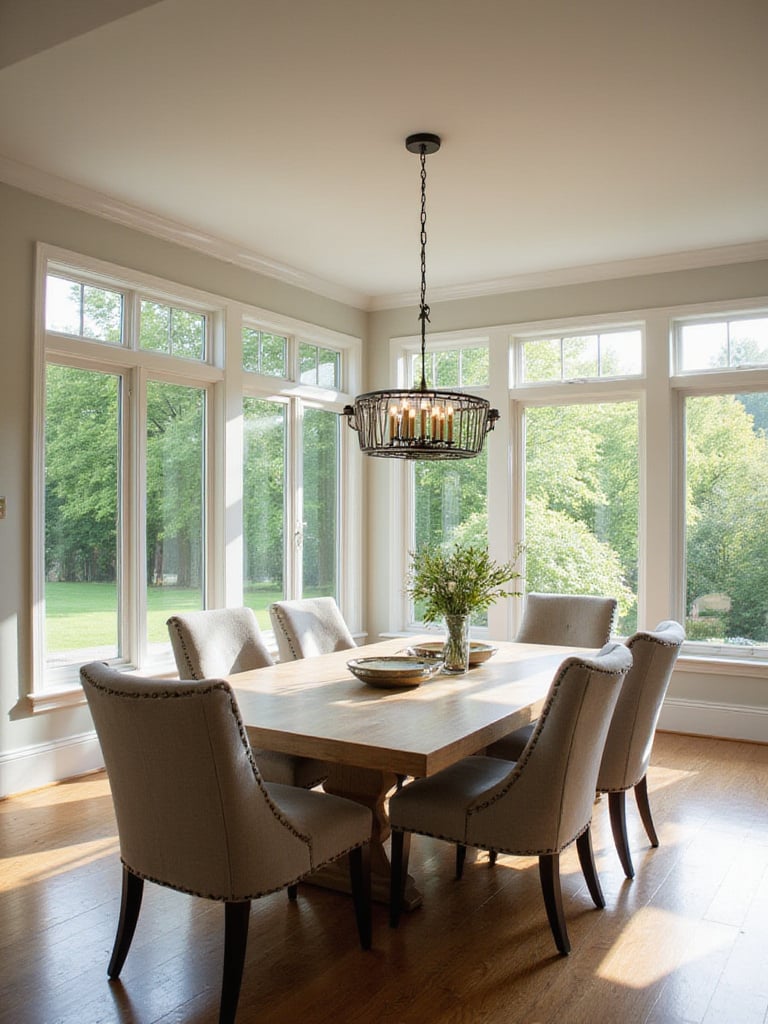
To identify your home’s dominant style, look for recurring elements throughout your spaces—architectural details, color palettes, materials, and existing furniture. For modern homes, seek dining furniture with clean lines and minimal ornamentation. Traditional spaces welcome rich wood tones and classic silhouettes. Farmhouse style embraces natural materials and rustic finishes, while mid-century modern features organic shapes with tapered legs.
When clients ask us about balancing style with comfort, I suggest identifying one key style as your foundation, then introducing complementary elements as accents. This approach creates spaces that feel curated rather than matched, with a sense of evolution that reflects your personal journey.
While individual chairs remain the standard, incorporating a bench along one side of your dining table offers versatility that many modern households appreciate.
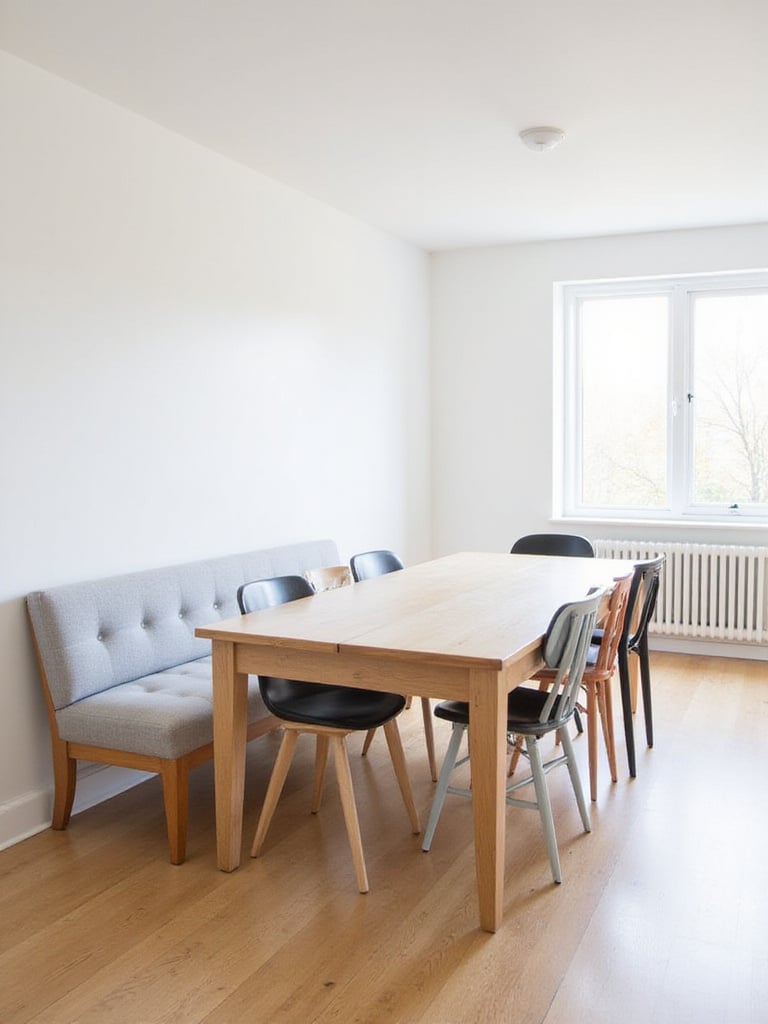
Benches excel at maximizing seating capacity, often accommodating more people than individual chairs would along the same length. They create a casual, communal atmosphere that encourages closeness and can be tucked completely under the table when not in use—a significant space-saving feature. However, they typically lack back support and may be less comfortable for extended dining sessions.
This chameleon-like piece adapts to various styles by changing its presentation. A simple wooden bench complements farmhouse dining room furniture, while an upholstered bench with clean lines suits contemporary spaces. Some families appreciate benches for children’s seating, finding them more accommodating of wiggly young diners.
The subtle distinction between armchairs and side chairs significantly impacts both comfort and the visual weight of your dining room furniture arrangement.
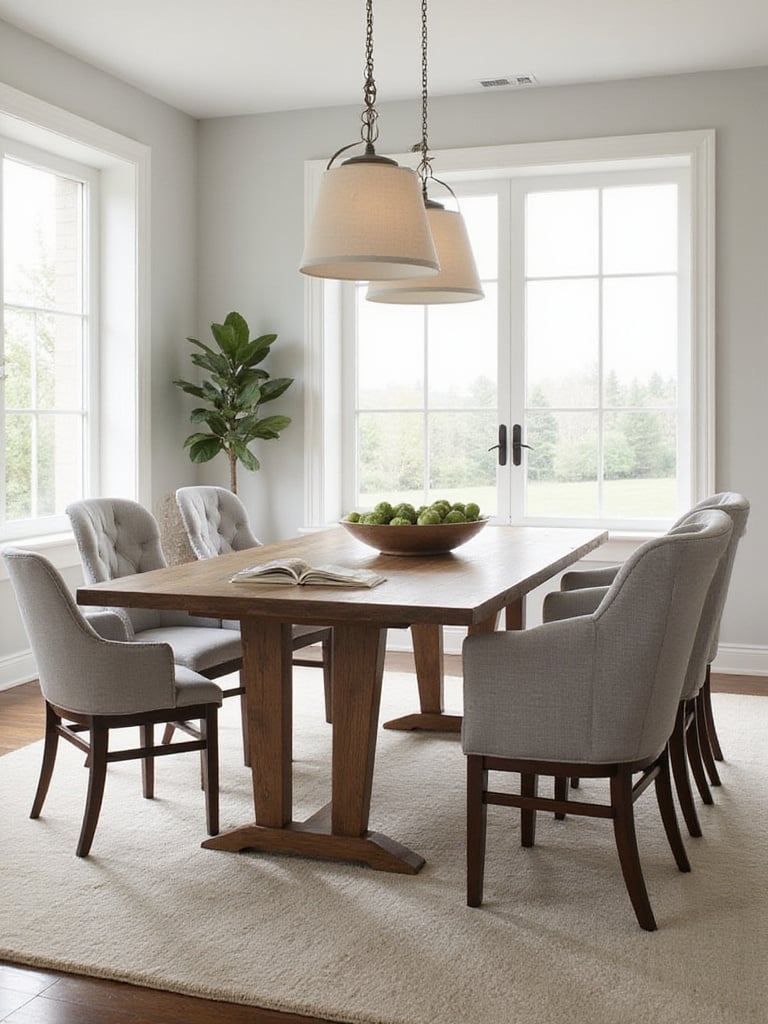
Armchairs provide additional support and a more substantial presence, traditionally placed at the head and foot of rectangular tables as anchor points. Side chairs, lacking arms, offer a more streamlined profile that allows for easier movement and takes up less visual space. When mixing the two:
The professional stylists approach this by first considering the room’s proportions. In larger dining spaces, the substantial presence of armchairs creates necessary visual weight, while smaller rooms benefit from the lighter appearance of side chairs that allow the eye to travel through them.
The upholstery on your dining chairs directly impacts how long people will comfortably linger at your table—a crucial consideration for those who value extended conversations over meals.
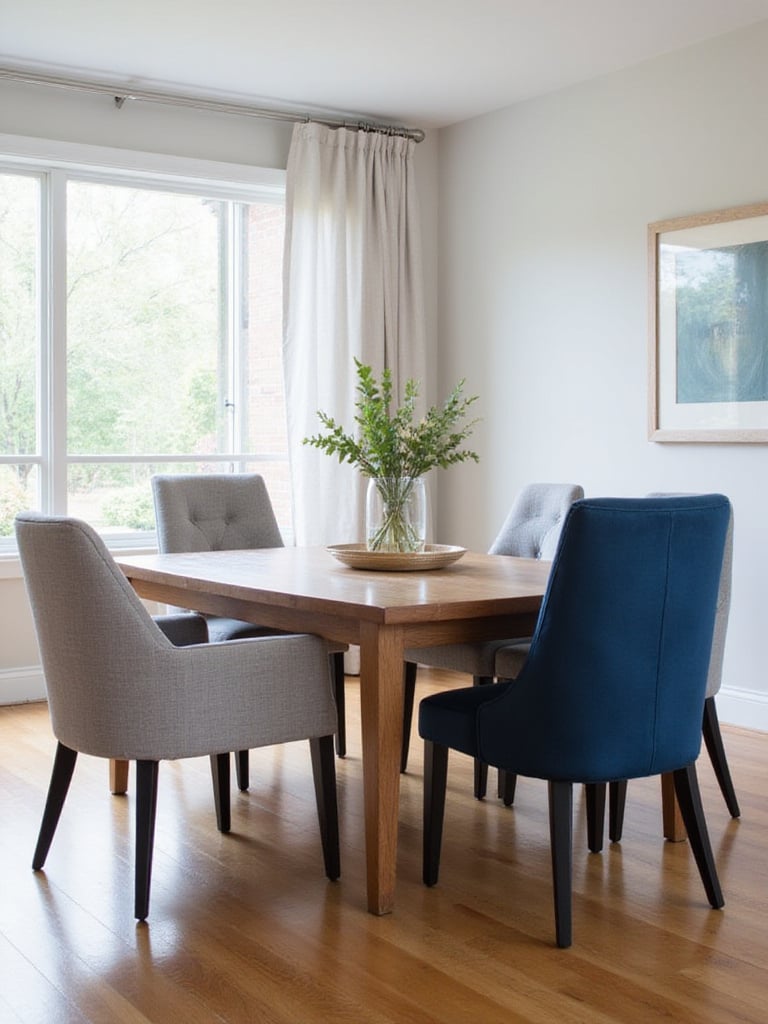
Different upholstery materials offer varying benefits for dining room furniture. Performance fabrics like Crypton and Sunbrella provide excellent stain resistance for families with children or frequent entertainers. Leather and faux leather offer easy cleaning and sophisticated appearance but may feel cold initially. Natural fibers like linen and cotton feel wonderful but require more maintenance and stain protection.
The environmental story behind this piece began with understanding that truly sustainable dining spaces consider both material sourcing and longevity. Choose upholstery that will last through years of use rather than requiring frequent replacement, and consider natural fibers treated with environmentally friendly stain resistants.
For those who entertain occasionally but don’t need a large table daily, extendable dining room furniture offers the perfect solution—combining everyday practicality with hosting flexibility.
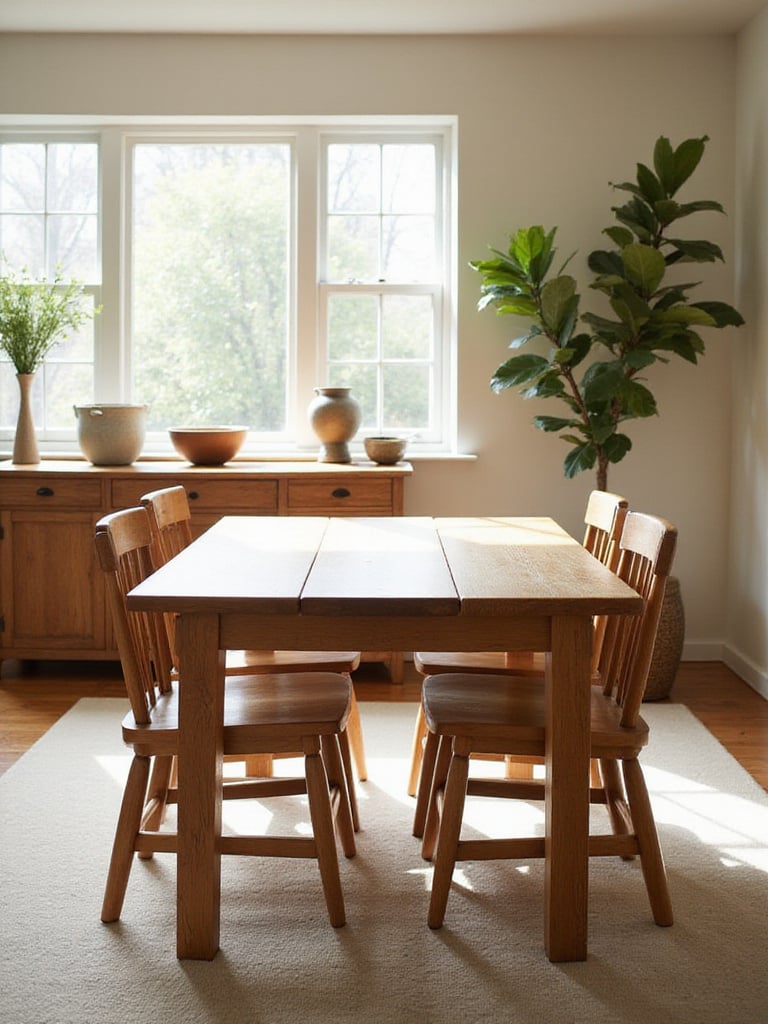
extendable tables come in various mechanisms: leaf extensions (separate sections added to the center or ends), butterfly leaves (hinged sections that fold out from underneath), drop leaves (sides that fold down when not needed), and gateleg designs (with swinging support legs). When selecting one:
Beyond the obvious placement, consider using this for more than just dining. An extendable table can serve as a compact work surface day-to-day while expanding to accommodate craft projects, game nights, or holiday meal preparation when needed.
Lighting transforms dining room furniture from merely functional to truly atmospheric, playing a crucial role in creating the right mood for different dining occasions.
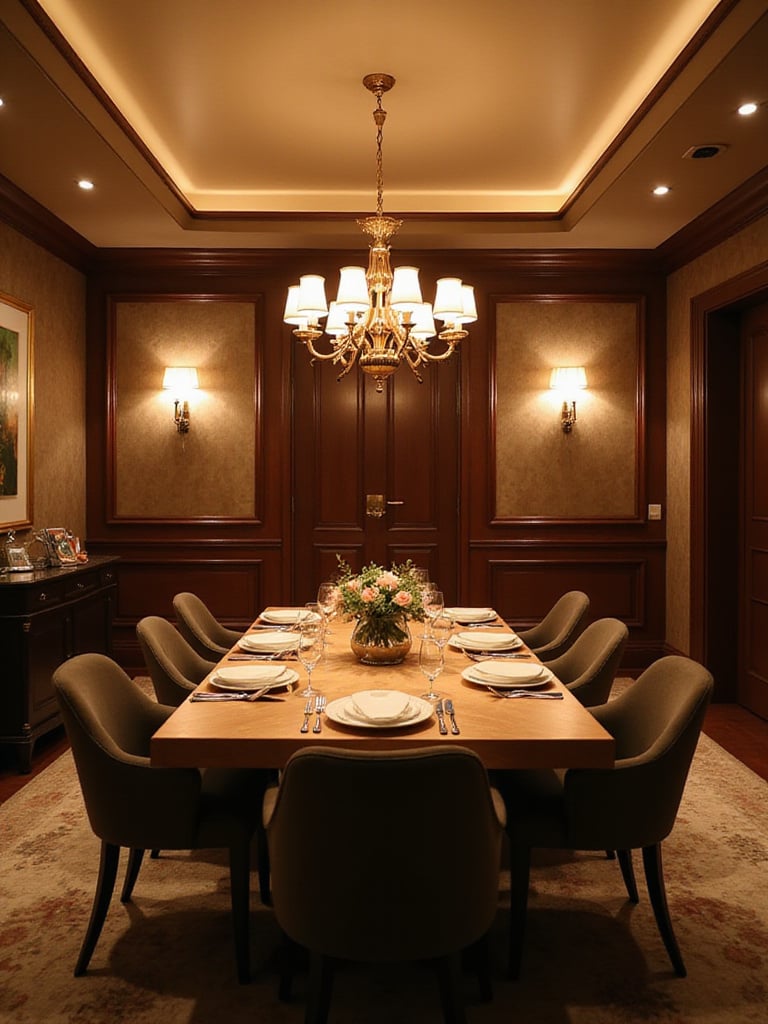
Effective dining room lighting employs layers: ambient lighting for overall illumination, task lighting focused on the table surface, and accent lighting to highlight architectural features or art. A chandelier or pendant centered above the table serves as both a focal point and primary light source, ideally on a dimmer switch to adjust for different occasions. For best results:
As morning light filters through, the texture creates different moods throughout the day. In Islamic design tradition, the play of light and shadow holds special significance—consider how your lighting fixtures might cast beautiful patterns across your dining room furniture, adding another dimension to your space.
A well-chosen area rug beneath your dining table anchors the furniture grouping, adds warmth and texture, and protects flooring from chair movement.
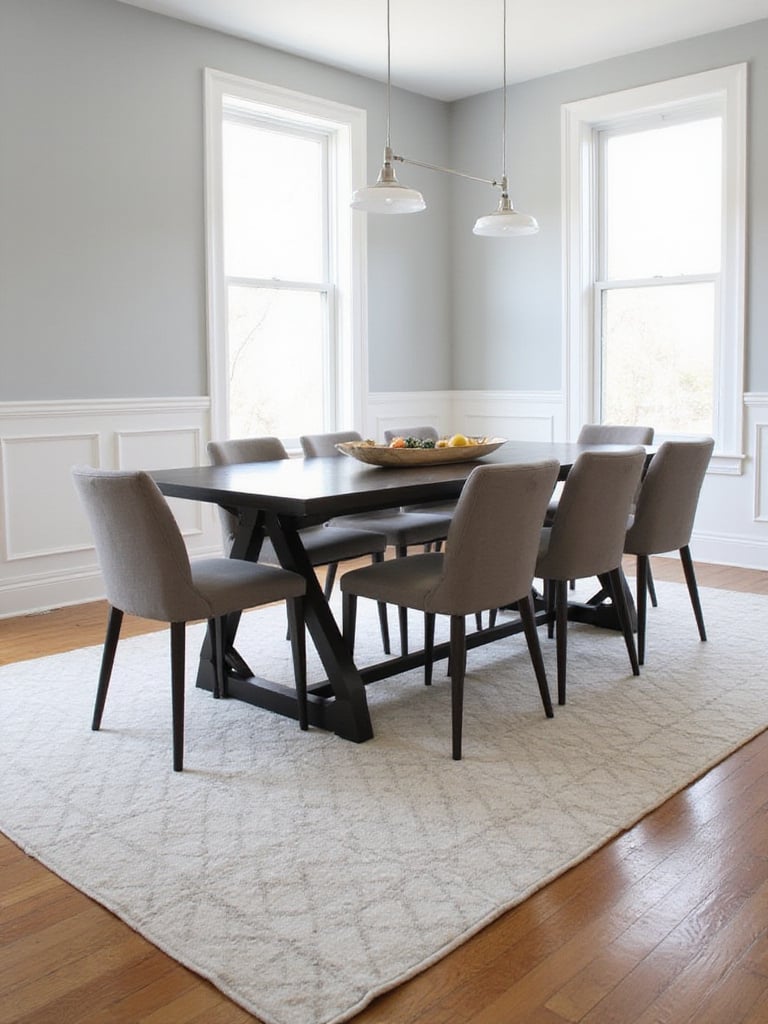
The right rug size extends at least 24 inches beyond all sides of the table, allowing chairs to remain on the rug even when pulled out. To determine dimensions, measure your table and add 48 inches to both length and width. Choose materials based on your lifestyle:
The maker’s journey from apprentice to master influenced traditional rug patterns that still inform contemporary designs. Many geometric patterns in dining room rugs echo ancient symbols of hospitality and abundance—subtle reminders of the sacred nature of sharing food.
Quality dining room furniture represents a significant investment that deserves protection from the inevitable spills, heat, and scratches that accompany regular use.
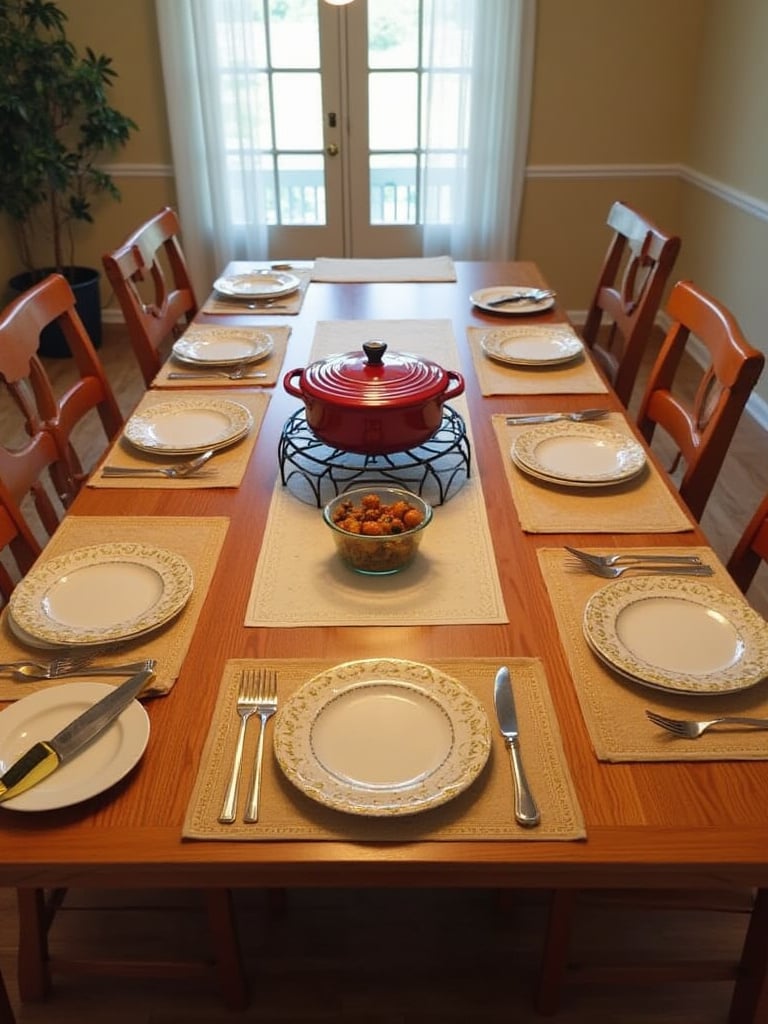
Preventative measures make a tremendous difference in maintaining your table’s beauty. Use placemats, coasters, and trivets to protect against heat and moisture. Clean spills immediately using appropriate products for your table’s material. For added protection, consider:
The quality becomes evident after years of use when properly protected dining room furniture develops character rather than damage. A well-maintained table becomes more beautiful with age, recording the subtle marks of family gatherings while maintaining its structural integrity.
Breaking away from matched sets creates dining room furniture arrangements with personality and visual interest that feel collected rather than purchased.
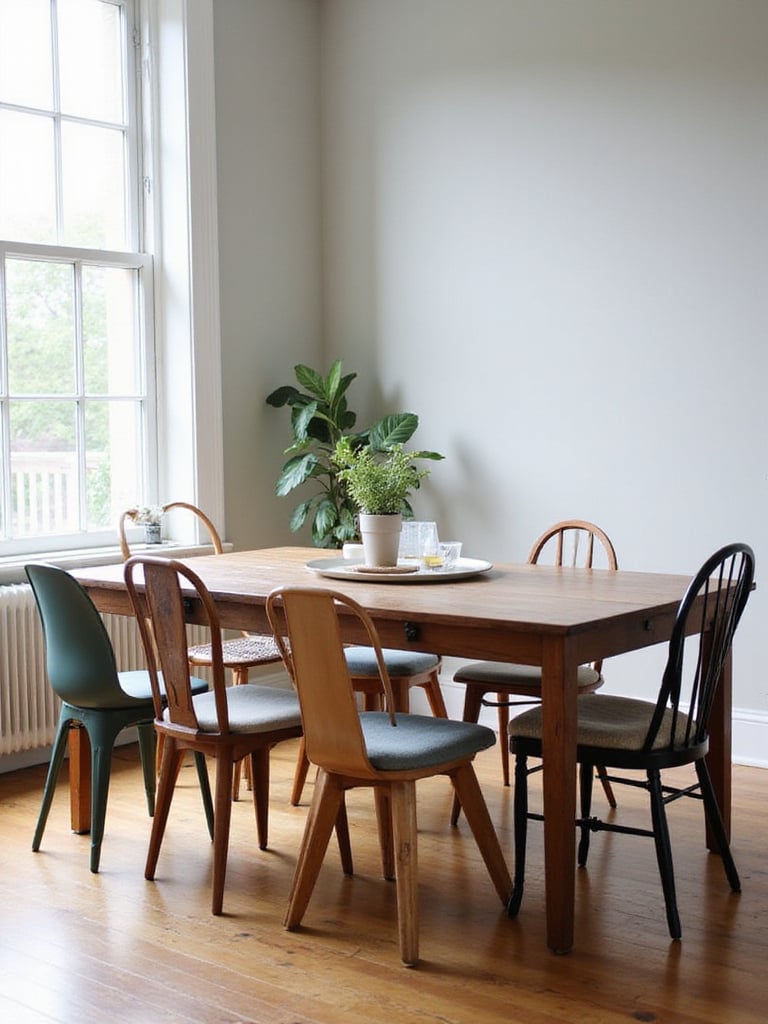
To successfully mix chair styles without creating chaos, maintain at least one consistent element across all pieces—perhaps the same color palette, similar materials, or consistent seat heights. Effective mixing strategies include:
The unexpected pairing that always works is combining chairs that share geometric elements from different traditions. The mathematical precision found in Islamic patterns often harmonizes beautifully with mid-century or contemporary pieces that employ similar geometric principles.
With the main dining room furniture in place, thoughtful accessories complete the space, adding personality and creating a fully realized environment for gathering.
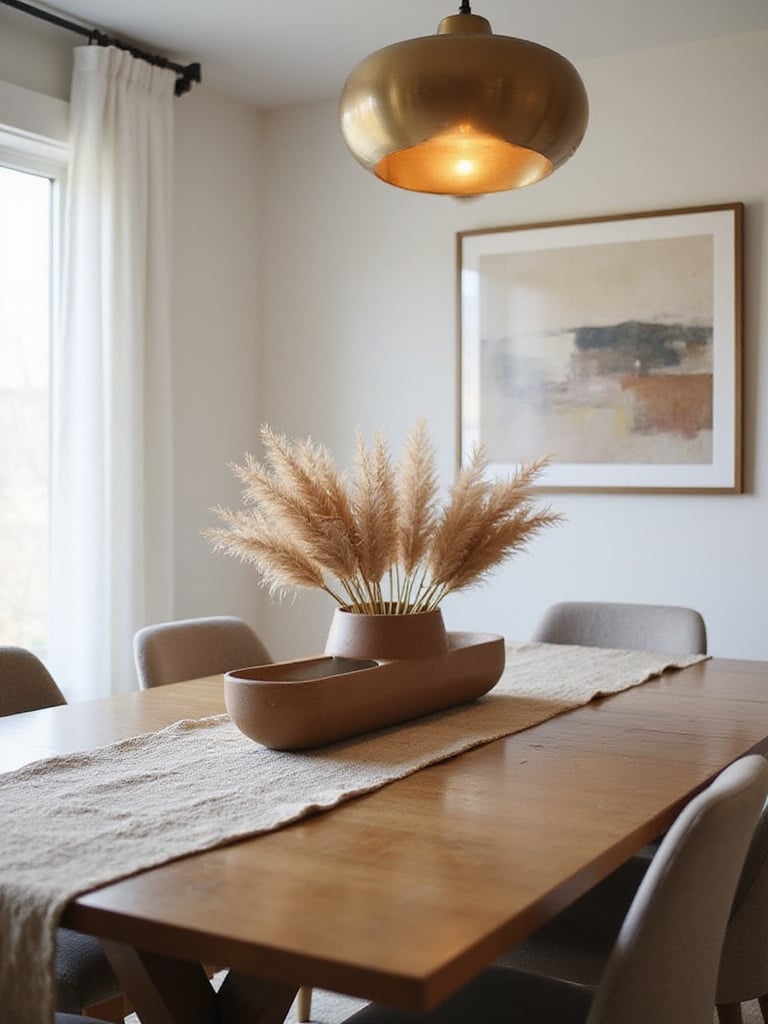
Avoid over-accessorizing your dining area, which can create visual clutter and impede conversation. Instead, select a few meaningful pieces that enhance without overwhelming:
The finishing touch that elevates the entire look is incorporating elements that engage multiple senses—the visual beauty of your dining room furniture, the tactile pleasure of quality textiles, perhaps the subtle scent of fresh flowers or herbs. These sensory layers transform dining from mere sustenance to a holistic experience.
Creating a dining space with the right furniture is about more than aesthetics—it’s about honoring the sacred act of gathering. Each piece you select contributes to an environment where connections deepen and memories form. From the foundational table to the chairs that welcome guests to the accessories that personalize the space, every element matters.
By approaching your dining room furniture selections with intention and care, you create more than just a functional eating area. You establish a sanctuary for sharing not just meals, but stories, laughter, and the meaningful moments that strengthen bonds. In a world of increasing disconnection, a thoughtfully furnished dining room becomes a powerful invitation to reconnect with what matters most.